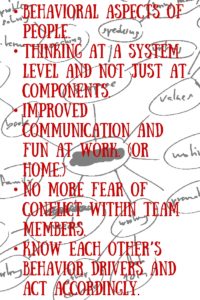by Durgesh Kumar Mishra
I am an agile coach by practice and visualize everything in an agile way where happiness and culture are major ingredients. Happiness at work or at home is a win-win situation. Happy, engaged people are healthier, more productive, they have more ideas and are more likely to contribute over and above the responsibilities of their job and perform their best. So, if your team/family is happy, you and others around them are more likely to be happy too.
Last time I brought home the Management 3.0 practice of the Happiness Door to get better feedback from my son and to make him feel like I was listening to his day, even when I couldn’t always be home on time to have the conversation in person.
Problem Statement:
OK so my daily job was to check the door and try to solves or help my kid and make him happy/delighted. Other day I found few interesting and a couple unsavory stickies on the door.
“Daddy put me in a different school.”
“Mom didn’t let me go out with my friends.”
For me these stickies were very challenging to read and I thought of having a one-on-one conversation with my kid and wife so that I could better understand their problem. But I couldn’t make any decisions because I didn’t wanted to be biased in my decisions at home with my family.
Initial Observation:
- Why did my kid want to move out to different school? We thought it was the best school in our area.
- Why didn’t his mother let him go out with friends?
So, this led me to have a conversation and activity with both my wife and my kid. I somehow convinced both of them on experimenting with the Management 3.0 practice of Personal Maps.
- My wife would create Personal Map for my kid, in order to know more about his areas of interests which we may not be aware of.
- I would create a Personal Map for my wife, to know better why she gets angry at him/us and get into a command-and-control situation.
Both the maps would help me come to some conclusion why their behavior is different or their expectation aren’t matching up. The first map would help me and my wife understand why “Daddy put me in a different school” came up. The second would help me understand what my wife’s expectation was from kid and myself.
Learn more about Personal Maps in a Management 3.0 Foundation Workshop:



I stumbled upon this site searching for “Improv and Agile”, having an interest in both, but not having seen the two together.
I am impressed both with Durgesh’s using this technique, and that his family also embraced it after their experiment.
I now want to learn more about Personal Maps and Management 3.0.
Thanks so much Dave.